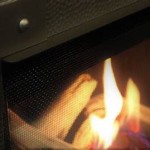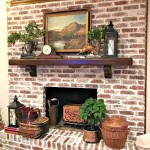```html
Fireplace Glass Screens: Safety, Aesthetics, and Functionality
Fireplace glass screens are a common addition to both wood-burning and gas fireplaces, serving a multifaceted purpose. They offer a barrier for safety, enhance the aesthetic appeal of the fireplace, and contribute to the efficient operation of the heating appliance. Understanding the different types of glass screens, their benefits, and proper maintenance is crucial for homeowners looking to optimize their fireplace experience.
The primary function of a fireplace glass screen is to prevent sparks and embers from escaping the firebox and landing on nearby rugs, furniture, or flooring. These errant embers can pose a significant fire hazard, particularly if left unattended. Glass screens act as a physical barrier, containing the fire within the designated area and minimizing the risk of accidental fires. Beyond embers, they also prevent pets and small children from getting too close to the open flames, offering an additional layer of protection.
While safety is paramount, fireplace glass screens also contribute significantly to the visual appeal of the fireplace. They come in a variety of styles, from simple and minimalist designs to more ornate and decorative options. The glass itself can be clear, tinted, or textured, allowing homeowners to customize the look of their fireplace to match their décor. A well-chosen glass screen can transform a utilitarian fireplace into a focal point of the room, enhancing its overall aesthetic.
Furthermore, fireplace glass screens can indirectly improve the efficiency of a fireplace. By preventing drafts and controlling airflow, they can help to maintain a more consistent temperature in the room and potentially reduce heat loss up the chimney. This is particularly true for gas fireplaces, where glass screens are often integral to the unit's design and are tested for optimal performance. Properly installed and maintained screens can contribute to lower energy bills and a more comfortable living environment.
Types of Fireplace Glass Screens
Fireplace glass screens are available in a variety of configurations, each offering distinct advantages and disadvantages. The choice of screen often depends on the type of fireplace, the desired aesthetic, and the homeowner's budget. Understanding the different types is essential for making an informed decision.
Single-Panel Screens: These are the simplest and often most affordable type of fireplace glass screen. They typically consist of a single pane of tempered glass surrounded by a metal frame. Single-panel screens are easy to install and maintain, and they offer a clear view of the fire. However, they may not provide as much protection from errant embers as other types of screens, and they can be more susceptible to damage if struck or bumped.
Bi-Fold Screens: Bi-fold screens consist of two panels of glass that are hinged together. This design allows for easier access to the firebox for tending the fire or adding wood. Bi-fold screens often feature decorative handles and hinges, adding to their aesthetic appeal. They provide a good balance of safety, functionality, and style. However, they can be more expensive than single-panel screens, and the hinges may require occasional maintenance.
Tri-Fold Screens: Similar to bi-fold screens, tri-fold screens consist of three hinged panels. This configuration allows for even greater flexibility in accessing the firebox and provides a wider viewing area of the fire. Tri-fold screens are often used for larger fireplaces, and they can be particularly effective at preventing embers from escaping. However, they are typically the most expensive type of fireplace glass screen, and they can be more difficult to install and maintain.
Custom Screens: For homeowners with unique fireplace dimensions or specific aesthetic preferences, custom-made glass screens are an option. These screens are designed and fabricated to fit the exact specifications of the fireplace opening, ensuring a perfect fit and optimal performance. Custom screens can incorporate a variety of design elements, such as different glass types, metal finishes, and decorative accents. However, they are typically the most expensive option and require a longer lead time for fabrication.
Benefits of Using Fireplace Glass Screens
The benefits of using fireplace glass screens extend beyond basic safety and aesthetics. They contribute to improved air quality, increased energy efficiency, and a more controlled burning environment. Understanding these benefits can help homeowners appreciate the value of this often-overlooked fireplace accessory.
Enhanced Safety: As previously mentioned, the primary benefit of a fireplace glass screen is enhanced safety. By preventing sparks and embers from escaping the firebox, they significantly reduce the risk of accidental fires. This is particularly important in homes with young children, pets, or flammable furnishings. Glass screens also protect against potential burns from accidental contact with the open flames or hot surfaces of the fireplace.
Improved Air Quality: Fireplace glass screens can help to improve indoor air quality by reducing the amount of smoke and pollutants that escape into the room. By controlling airflow and preventing drafts, they can help to direct more of the smoke up the chimney, reducing the amount of particulate matter that is released into the air. This is particularly beneficial for individuals with respiratory sensitivities or allergies. Furthermore, for gas fireplaces, the glass is often part of a sealed system which drastically reduces any gas leakage into the home.
Increased Energy Efficiency: While not a primary function, fireplace glass screens can contribute to increased energy efficiency. By preventing drafts and controlling airflow, they can help to maintain a more consistent temperature in the room and reduce heat loss up the chimney. This is particularly true for gas fireplaces, where the glass screen is often an integral part of the unit's design and is tested for optimal performance. Properly installed and maintained screens can contribute to lower energy bills and a more comfortable living environment.
Aesthetic Enhancement: Fireplace glass screens can significantly enhance the aesthetic appeal of the fireplace. They come in a variety of styles, from simple and minimalist designs to more ornate and decorative options. The glass itself can be clear, tinted, or textured, allowing homeowners to customize the look of their fireplace to match their décor. A well-chosen glass screen can transform a utilitarian fireplace into a focal point of the room, enhancing its overall aesthetic.
Maintaining Fireplace Glass Screens
Proper maintenance is essential for ensuring the longevity and optimal performance of fireplace glass screens. Regular cleaning and inspection can prevent buildup of soot and creosote, which can reduce visibility and potentially pose a fire hazard. Following a few simple maintenance guidelines can help homeowners keep their glass screens looking their best and functioning safely.
Regular Cleaning: Fireplace glass screens should be cleaned regularly to remove soot, creosote, and other debris that can accumulate on the surface. The frequency of cleaning will depend on the frequency of fireplace use, but generally, cleaning should be done at least once a month during the heating season. A specialized fireplace glass cleaner should be used to avoid damaging the glass or metal frame. Alternatively, a mixture of warm water and mild dish soap can be used, but it is important to rinse thoroughly and dry completely to prevent streaking.
Inspection for Damage: Fireplace glass screens should be inspected regularly for any signs of damage, such as cracks, chips, or warping. Damaged glass can compromise the screen's safety and effectiveness, and it should be replaced promptly. The metal frame should also be inspected for rust or corrosion, and any damaged areas should be repaired or replaced as needed.
Proper Storage: During the off-season, fireplace glass screens should be stored in a dry and protected location to prevent damage. If the screen is not being used, it should be removed from the fireplace opening and stored in a garage, shed, or other secure location. Before storing, the screen should be thoroughly cleaned and dried to prevent the growth of mold or mildew. Covering the screen with a cloth or plastic sheet can help to protect it from dust and scratches.
Professional Maintenance: For more complex maintenance tasks, such as repairing damaged glass or replacing hinges, it is often best to consult with a qualified fireplace professional. These professionals have the knowledge and experience to safely and effectively maintain fireplace glass screens, ensuring their optimal performance and longevity.
In conclusion, fireplace glass screens represent a valuable investment for homeowners seeking to enhance the safety, aesthetics, and functionality of their fireplaces. By understanding the different types of screens, their benefits, and proper maintenance techniques, homeowners can make informed decisions and enjoy the warmth and ambiance of their fireplaces with peace of mind.
```
Ledge Glass Fireplace Screen Reviews Cb2

Barton 36 In W X 26 H Single Fire Place Panel Tempered Glass Fireplace Screen Freestanding 95057 The Home Depot

Fireplace Glass Doors Vs Screens Full Service Chimney

Fireplace Glass Doors Vs Screens Full Service Chimney

Victoria Beveled Glass Fireplace Screen Frontgate

Plow Hearth 2 Door Fl Fireplace Fire Screen With Beveled Glass Panels Black Target

Freestanding Fireplace Glass Screen 38 Wide X 26 High

Steel Fireplace Screen Rustic Screens

Fireplace Glass Doors Vs Screens Full Service Chimney

Telum Black Glass Fireplace Screen Reviews Crate Barrel
Related Posts








